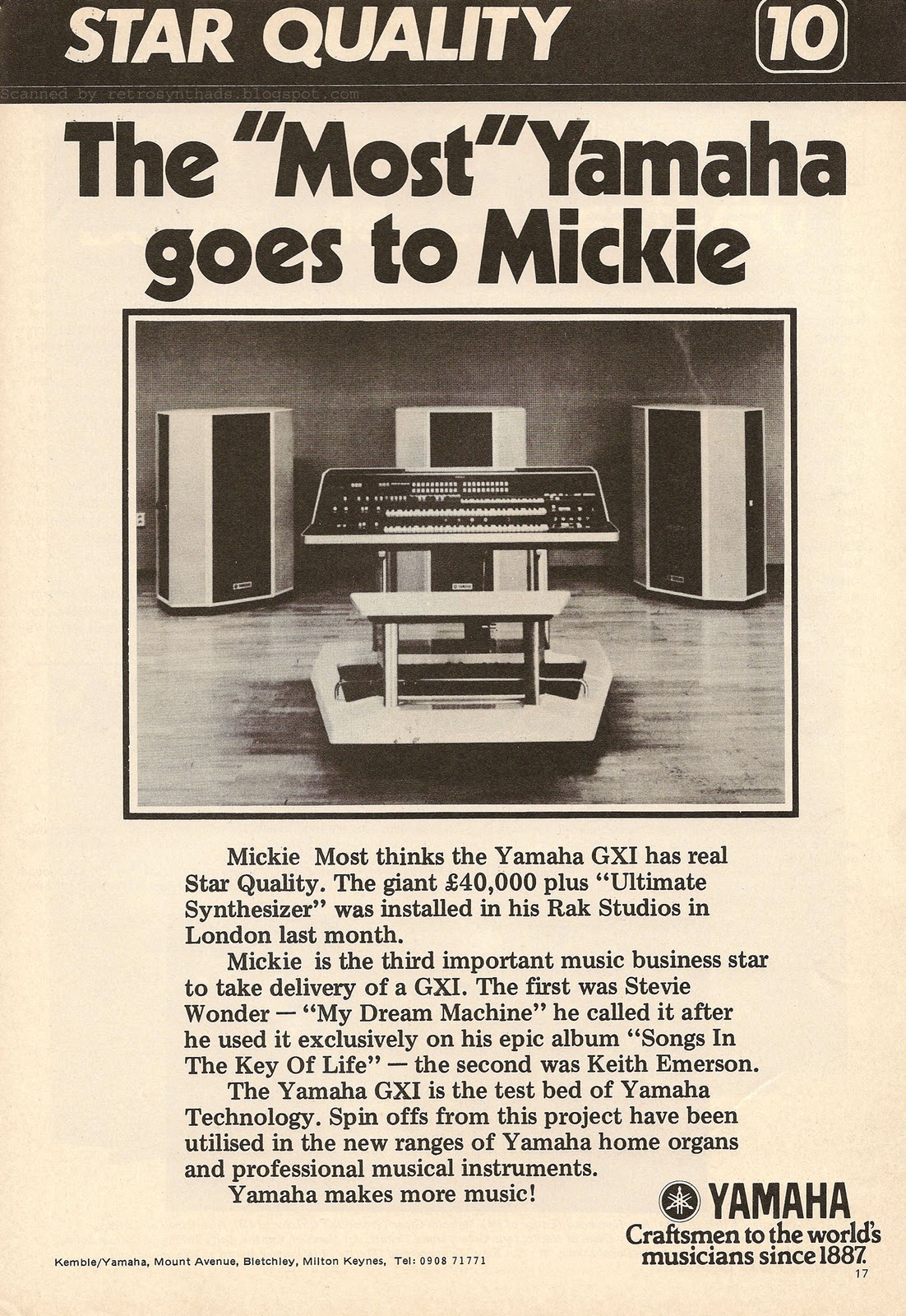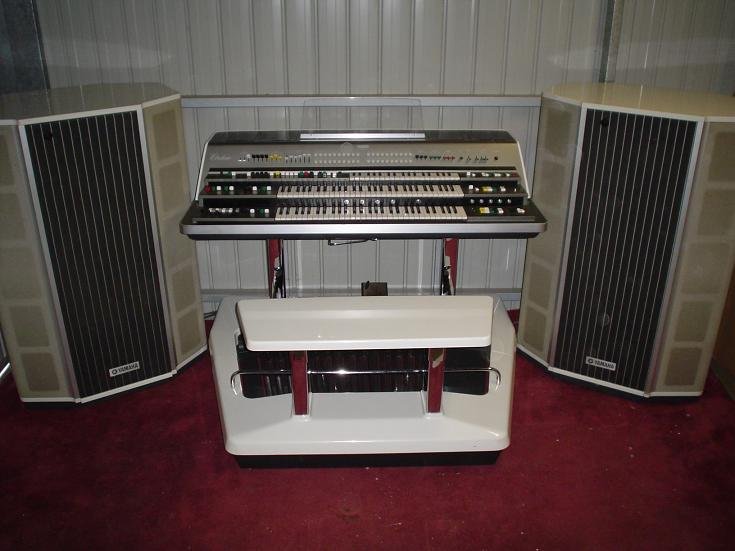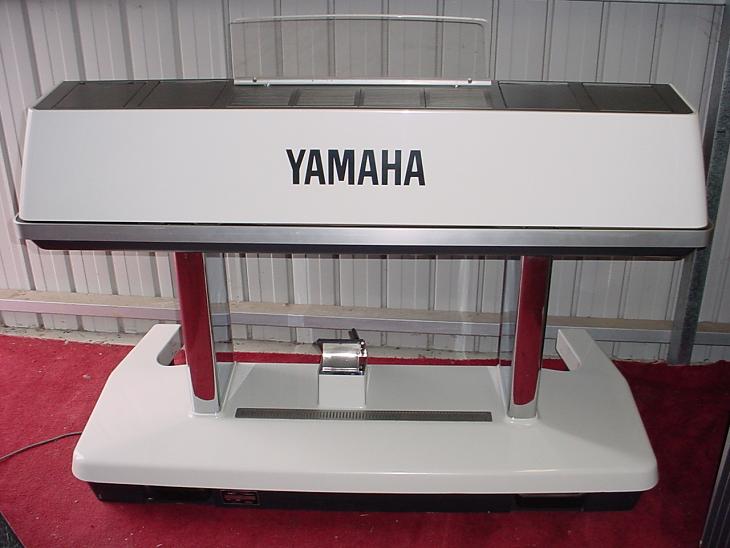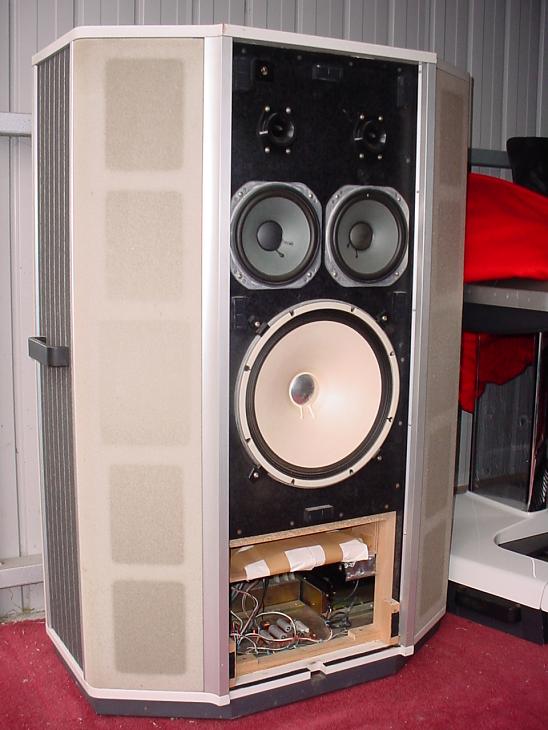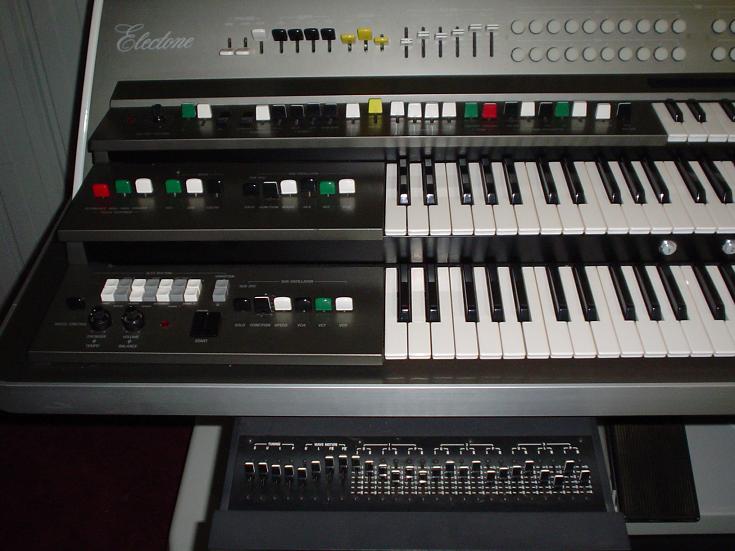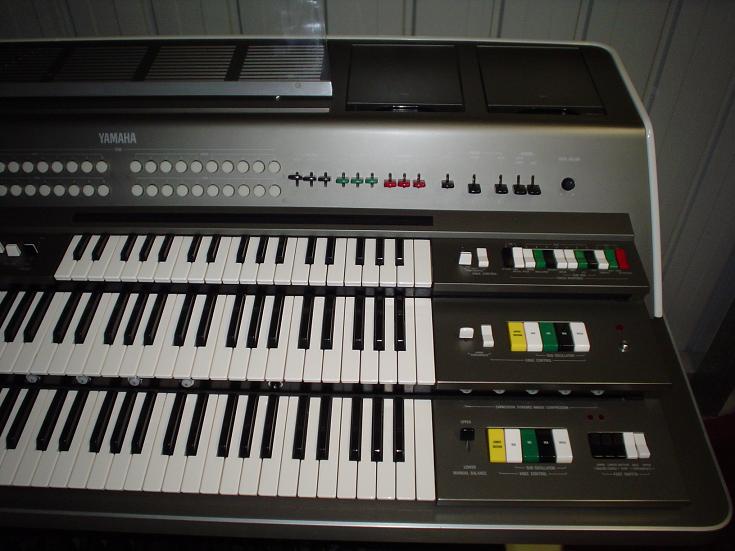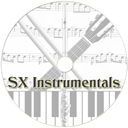Filter on ALL, SYNTH, DRUM, SAMPLER or MISC |
Total list currently 2405 items in 330 Brands |
Yamaha | GX1 |
Description | The Yamaha GX-1, first released as Electone GX-707, is an analog polyphonic synthesizer organ developed by Yamaha as a test bed for later consumer synths and Electone series organs for stage and home use. The GX-1 has four synthesizer "ranks" or three manuals, called Solo, Upper, and Lower, plus Pedal, and an analog rhythm machine. The Solo rank features a 3-octave keyboard with 37 keys that are full width but shorter than standard. Directly above the Solo keyboard runs the Portamento keyboard - a ribbon controller which can be used to play continuously variable pitches roughly corresponding to the Solo keyboard note below. The Portamento keyboard overrides the solo keyboard if used simultaneously. The Solo rank has only a single oscillator, but has a dedicated low-frequency oscillator (LFO), pitch envelope generator and ring modulator. The Upper and Lower ranks each have a full-sized 5-octave, 61-note keyboard. They are both 8-voice polyphonic, with two oscillators per voice. Each poly rank has a dedicated LFO, and there is a common "random" modulation generator. The Upper rank also has horizontal aftertouch which can be assigned to pitch, volume or filter, and a polyphonic glide function. The Pedal rank has a 25-note pedalboard. It is monophonic, with three oscillators but no LFO. Performance controls include a "swell" pedal with footswitch, and a spring-loaded knee controller. All four ranks use a common voice-card design (called a tone generator in Yamaha parlance) to produce their sounds. Each voice card features a voltage controlled oscillator with multiple waveforms, 2-pole high-pass and low-pass voltage controlled filters, and two envelope generators for filter modulation and VCA control. There is also a variable band-pass filtered sawtooth wave, and high-pass filtered square wave on each card. There are a total of 36 voice cards in a GX-1, containing 36 oscillators, 72 envelope generators, and 144 filters. Due to the extensive use of epoxy-potted sub-modules, a complete set of GX-1 voice cards alone weighs more than a Polymoog. Preset sounds are stored on "tone modules" - small cartridges which each contain 26 fixed value resistor-dividers. These produce voltages which drive the voice cards, each resistor controlling one parameter of the sound. The tone modules are installed in compartments on the top panel of the synth. An optional "tone board" programmer could be inserted in place of a tone module, providing a full set of knobs, switches and sliders to control the parameters of a tone manually. Tones created this way could then be "programmed" onto a variable tone module using the Tone Module Setting Box. The Upper, Lower and Pedal ranks all have a dual-voice structure, where a different tone is assigned to each of the two voice cards per note. A set of hidden "wave motion" controls allows the second tones of the Upper and Lower ranks to be de-tuned. In the Pedal rank, the second tone is doubled on two voice-cards, both of which have a separate de-tune control. The GX-1 console weighs 300 kg. The pedalboard and stand add 87 kg, and each of its tube-powered speakers, four of which can be connected to the GX-1, weighs 141 kg (Which together equals a total of 951 kg, or 2096 lb). The GX-1 cost $60,000 (compensated for Consumer Price Index inflation, that price equals $317,271 in 2014), and was premiered in the US in 1973 at the NAMM convention. The exact production number is unknown, but thought to total fewer than 100. At least 13 GX-1s are known to exist outside Japan, the remainder are presumed to have stayed in Japan. The GX-1 was served as the test bed for the Yamaha CS-80 polyphonic synthesizer, a much smaller and portable instrument. |
| Brand | Yamaha |
| Model | GX1 |
| Device | Synth |
| Type | Keys |
| Engine Type | Digital |
| Engine | VCO |
| Voices (max) | 9 |
| Multitimbral | 4 |
| Oscillators | 2 |
| LFO | 1 voltage-controlled LFO |
| Engine Detailed | 2 VCO's per voice |
| Sampler | 2-pole low-pass voltage-controlled filter |
| Filter (VCF) | 2 ADSR envelope generators |
| Keys | 37 |
| Key type | Mini keys |
| Velocity | N |
| Aftertouch | Poly |
| Extra info | In Total: Two 61-note keyboards with velocity sensitivity. One 37-note 3/4 scale pressure sensitive keyboard. One 25-note pedalboard. |
| Produced: | 1973 - 1977 |
| Legend: | Obvious | Y: Yes, N: No, N/A: Not Applicable | |
| VCO | Voltage Controlled Oscillator | DCO | Digital Controlled Oscillator |
| LFO | Low Frequency Oscillator | Sub | Sub Oscillator |
| VCF | Voltage Controlled Filter | VCA | Voltage Controlled Amplifier |
| Velocity | As with a piano, the harder you hit a key, the louder the sound, unlike most organs which always produce the same loudness no matter how hard you hit a key. | Aftertouch | Pressing a key after you activated it. Channel Aftertouch, no matter which key, it will send a Channel message. Poly Aftertouch, sends the pressure per key instead of the whole channel. |
| Values for OSC, LFO, Filter, Envelope are per voice unless stated otherwise. | |||
